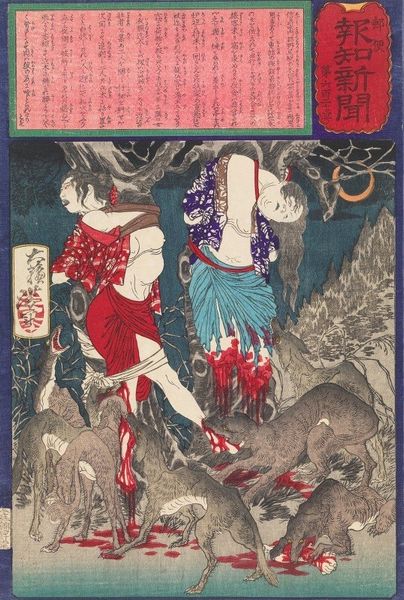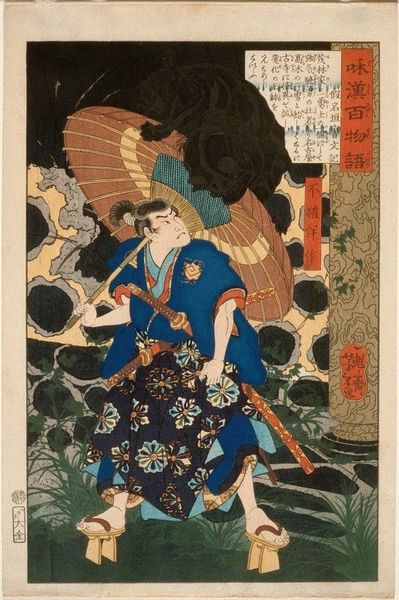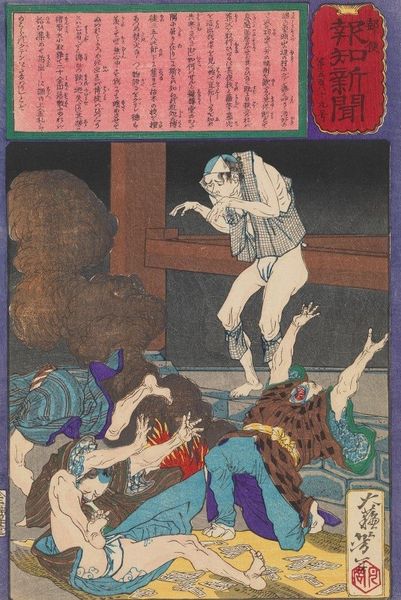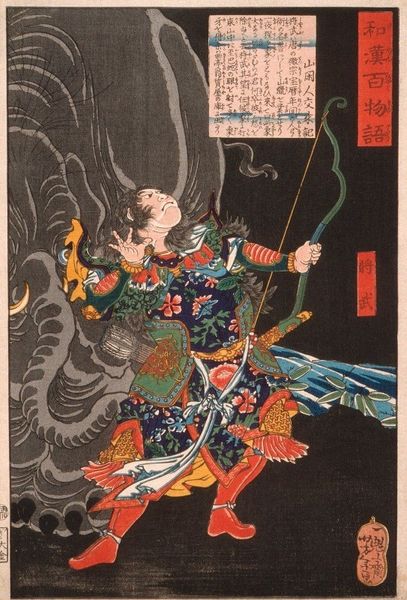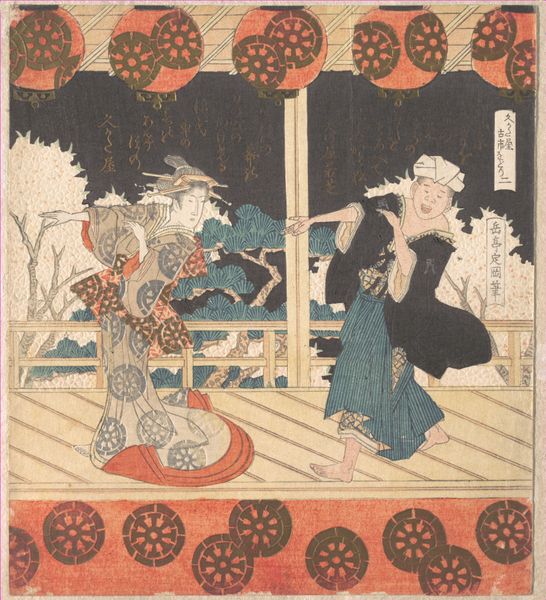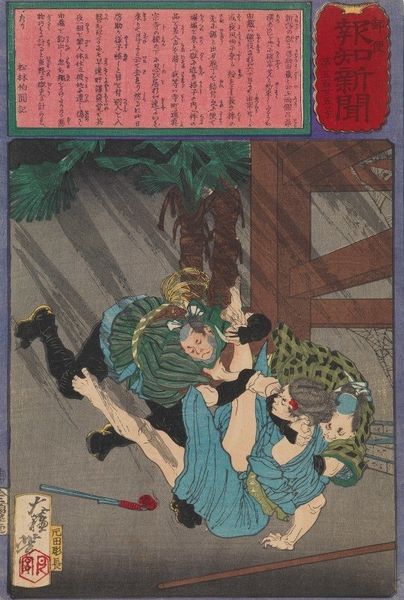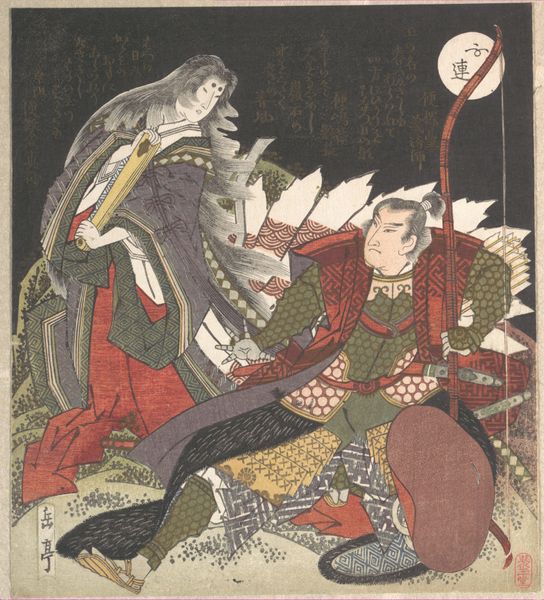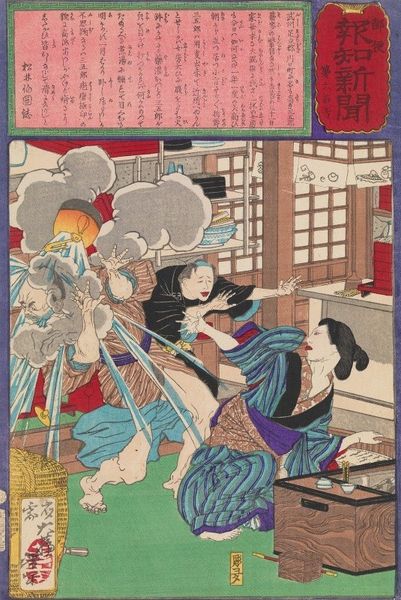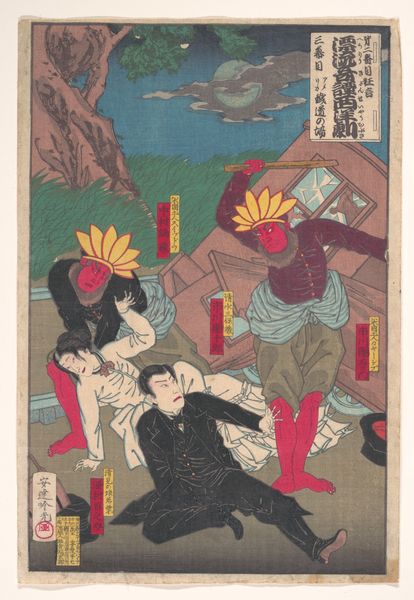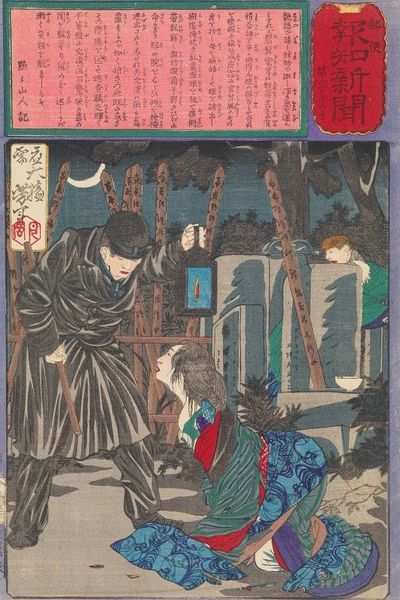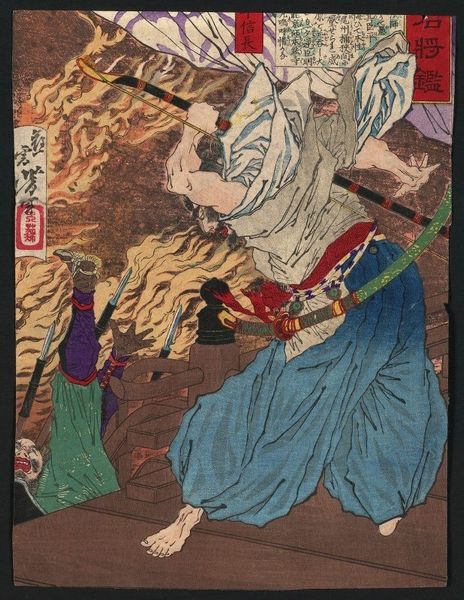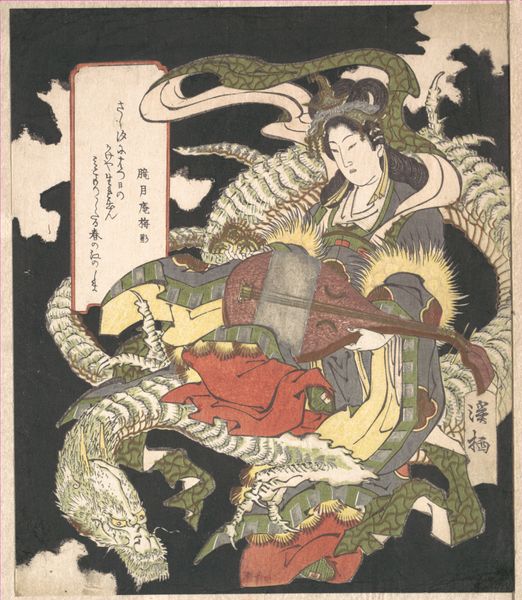
Copyright: Public Domain: Artvee
Editor: Here we have Tsukioka Yoshitoshi's woodblock print, "In a Fit of Jealousy Arai Tōkichi Hurls a Rock at Ohana," from 1875. The scene is incredibly dramatic – almost operatic! What strikes me most is the intense physicality depicted in the figures. How might we consider the significance of its materiality to interpreting the narrative? Curator: That's a perceptive observation. As a print, and therefore a multiple, this work isn’t just about the 'unique' artistic vision. We must examine the social conditions that allowed for its production, distribution, and consumption. How did the availability of woodblock prints shape popular understanding of historical narratives and social dramas like this one? Editor: That makes me consider the economics of it. Was the mass production changing the relationship between artist and consumer at this time? Curator: Absolutely. The *ukiyo-e* tradition wasn't catering to an elite clientele, it engaged a broad urban populace. So, what can we infer about the target audience's values and anxieties from this violent scene? Notice the specific gestures and clothing depicted; do they index a certain social class or status anxiety that would have resonated with the buying public? Editor: It's intriguing how the detail, the clothing patterns for instance, elevate what could be viewed as everyday violence into a more presentable artistic form, so it doesn’t immediately repel its audience. What does that juxtaposition do to our reading of this act of violence, then, in 19th-century Japan? Curator: Indeed. It suggests a negotiation between artistic representation, consumer appeal, and the lived experiences of a rapidly modernizing society. Think about how the *process* of making and disseminating the print also helped to construct or reinforce these social anxieties and perhaps even desires. What happens to a unique artwork when its made for mass consumption, like this woodblock print? Editor: This really highlights how a "simple" print opens up so many complex questions about art's relationship to society and economics. I’ll certainly view ukiyo-e with fresh eyes now. Curator: Precisely. By focusing on the material conditions of art production, we reveal its integral role in shaping and reflecting social reality.
Comments
No comments
Be the first to comment and join the conversation on the ultimate creative platform.
